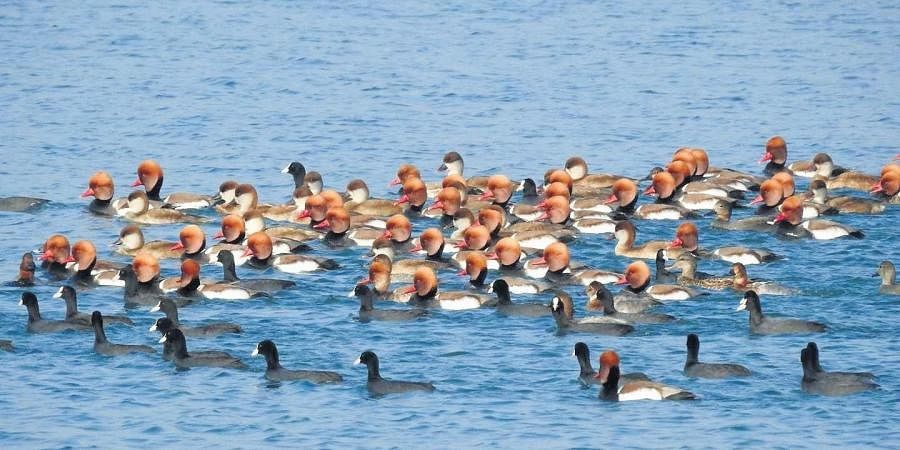Description

Disclaimer: Copyright infringement not intended.
Context
- The arrival of Surkhab birds, also known as Ruddy Shelducks, in Uttarakhand for their winter stay is a significant natural event.
Details
- The Ruddy Shelduck (Tadorna ferruginea) is a species of waterfowl that belongs to the family Anatidae.
Taxonomy and Classification
- The Ruddy Shelduck is a member of the Anatidae family, which includes ducks, geese, and swans.
- Its scientific name is Tadorna ferruginea.
Physical Characteristics
- Ruddy Shelducks are easily recognizable due to their distinctive appearance.
- They have a rust-colored or ruddy plumage on most of their body, with a white head and neck, which is sometimes marked with a dark collar.
- Their bill is orange with a black tip, and their legs are orange.
- These ducks have a wingspan of about 110-135 centimeters (43-53 inches) and a length of 58-70 centimeters (23-28 inches).
- Both males and females have similar plumage, although males are often slightly larger.

Habitat and Range
- Ruddy Shelducks have a broad distribution range, extending from Southeast Europe to Central Asia.
- They are commonly found in a variety of wetland habitats, including lakes, rivers, marshes, and ponds.
- During the winter months, some populations migrate to warmer regions.
Behavior
- Ruddy Shelducks are often seen in pairs or small groups, although larger flocks may form during migration.
- They are primarily herbivorous, feeding on aquatic plants, seeds, and small invertebrates found in their wetland habitats.
- These ducks are known for their loud, trumpeting calls.
Breeding and Reproduction
- Ruddy Shelducks typically breed in the spring and early summer.
- They build their nests in burrows or cavities, often in riverbanks or cliffs.
- The female usually lays a clutch of 6-10 eggs, which she incubates for about 28-30 days.
- After hatching, the ducklings are cared for by both parents and are capable of swimming and feeding on their own within a few weeks.
Conservation Status
- The Ruddy Shelduck is considered a species of "Least Concern" according to the International Union for Conservation of Nature (IUCN) Red List of Threatened Species.
- Their populations are generally stable, and they have adapted well to human-altered habitats.
The Significance of Asan Barrage
- Asan Barrage, located in Uttarakhand, serves as a key destination for these migratory birds during the winter months.
- The forest department has increased security measures to protect and facilitate the birds during their stay.
Migratory Behavior
- Around 70 to 80 species of birds migrate to the Asan Barrage wetlands, including Surkhab birds, from the high Himalayan region and cold regions of Europe.
- Some of these species include bar-headed geese, purple swamphens, white-bellied herons, and many more.
Unique Abilities of Migratory Birds
- Bar-headed geese, among the migratory birds, are known for their exceptional flying abilities at high altitudes, sometimes above 7,000 meters.
- These birds possess unique communication skills and can transmit messages through sounds to gather their group for synchronized flight.

Conclusion
The Ruddy Shelduck is a visually striking waterfowl species with a widespread distribution. Its adaptability to various wetland habitats and its overall stable populations contribute to its "Least Concern" conservation status. These ducks are a captivating part of the avian diversity found in their range and serve as a testament to the beauty of the natural world.
|
PRACTICE QUESTION
Q. Which of the following statements about the Ruddy Shelduck (Tadorna ferruginea) is correct?
A) Ruddy Shelducks have predominantly green plumage.
B) They are primarily carnivorous, feeding on fish and small mammals.
C) Ruddy Shelducks are known for their distinctive rust-colored plumage and white head.
D) They are listed as a critically endangered species on the IUCN Red List.
Answer: C)
|












